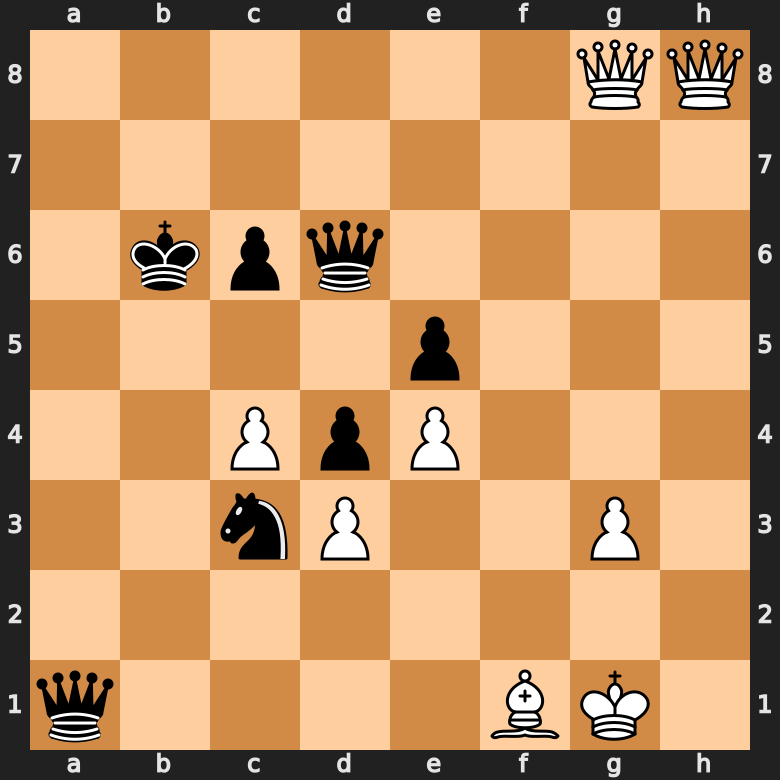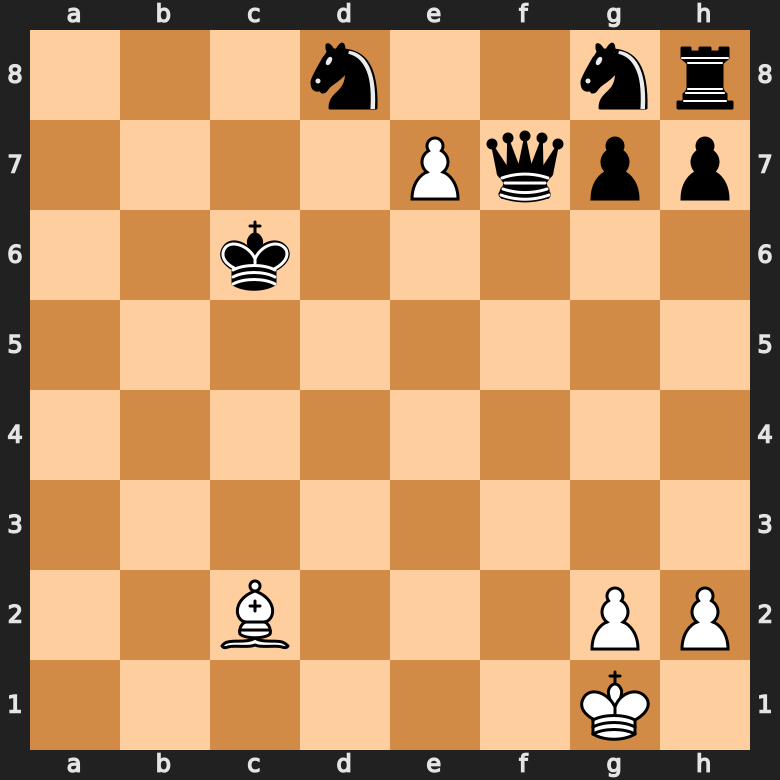Can You Have More Than One Queen In Chess?
Each player starts a game of chess with exactly one queen. Meaning, at the beginning of the game there are two queens – one white, one black – on the chess board. So, this begs the question: Can you have more than one queen in chess? And if yes, how many queens can you have at a time? Let’s find out together.
Can You Have Two (Or More) Queens In Chess?
Before we get into the boring theory, let’s start with a bit of real-life chess history. Have a look at this game:

This is a game played between Bobby Fischer and Tigran Petrosian in the 1959 Candidates Tournament. And as you can see, both players have more than one queen on the board – in fact, both have exactly two queens! There have been quite a few games where up to six queens were on the board at the same time. One example: The game between Emil Szalanczy and Nguyen Thi Mai in 2009.
So yes, it is possible and completely legal to have more than one queen in chess. That being said, you certainly don’t start the game of chess with more than a single queen. So, how exactly do we manage to increase the number of queens available to us?
How To Get More Than One Queen (Hint: Pawn Promotion)
The key to it all is a special move called pawn promotion. Whenever a pawn reaches the other (read: enemy) side of the board, it is immediately exchanged for a queen, rook, bishop, or knight of the same color. The exchange takes place immediately and is mandatory.
The pawn-promotion-procedure (how’s that for an alliteration?) is as follows:
- The pawn reaches the enemy’s back rank (as in the other side of the board)
- The pawn is exchanged for either a queen, rook, bishop, or knight of the same color immediately
- The new piece is placed on the exact square the pawn left the board from
- The player’s turn ends
Now obviously, in the context of having more than one queen, we want to exchange our promoting pawn for a queen. However, it is also possible to promote do different pieces.
Multiple Other Pieces: Possible With Underpromotion
Now, if you’ve read the rules above carefully, you might have noticed, that you don’t always have to promote your pawn for a new queen. Besides the queen, you can also choose a rook, bishop, or knight in exchange for your pawn. This is called underpromotion.
In this example you can see how an underpromotion to a knight (by capturing the knight on d8) leads to a fork, winning the enemy queen and subsequently the rook in the corner:

With the concept of an underpromotion, it is also possible to have:
- 10 rooks,
- 10 bishops, or
- 10 knights
on the chess board at the same time. Now, obviously, those situations are highly unlikely and require the cooperation of your opponent to happen.
How Many Queens Can You Have in Chess?
So, we’ve learned how we can get more than one queen through pawn promotion. Now, the next logical question is: “How many queens can one have in chess?”. Well, let’s calculate:
A player starts with one queen on the board. With eight pawns, a player can promote each of them into a queen, meaning eight additional queens. So, the maximum number of queens you can have on the board at one time is nine. Obviously, this is also a highly improbable scenario and won’t work without your opponent actively supporting your quest for more queens.
What About Tournaments?
In online chess, the problem of multiple queens is usually a non-existent one. Once a pawn reaches the other side of the board, the player simply gets a new queen (or other piece) directly onto the digital board. In tournaments, however, there is usually a limited supply of extra queens.
For professional tournaments, players normally have an extra queen directly next to the board, so they can quickly swap it in for a promoted pawn. If the player requires more than one extra queen, the proper procedure is to stop the clock and ask the arbiter for another queen.
In casual play, it is common to use a rook turned upside-down as an extra queen. However, this is not compatible with FIDE-rules in official tournaments, meaning, the rook – even turned upside down – would remain a rook.
USCF rules seem to allow upside-down rooks as queens. However, it is always better to just stop the clocks and wait for a proper piece to be delivered by the arbiter.
Read More About The Queen in Chess
- Can a King Take a Queen in Chess?
- Is a Queen Better Than a Rook and Bishop?
- How Does The Queen Move in Chess?
- Which Chess Piece Moves Diagonally?
- Can You Have More Than One Queen In Chess?
- How Much is Each Chess Piece Worth?
- Can The Queen Move Like a Knight in Chess?

